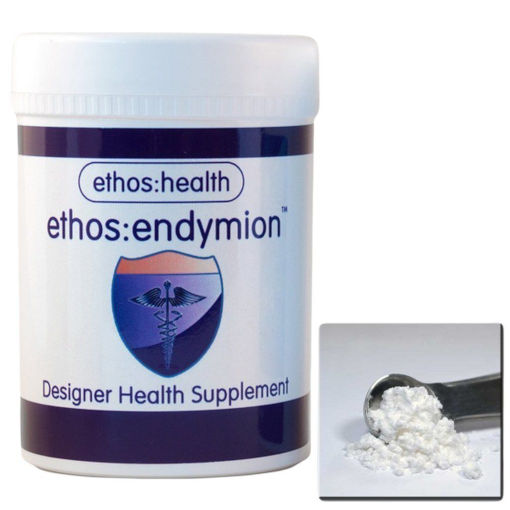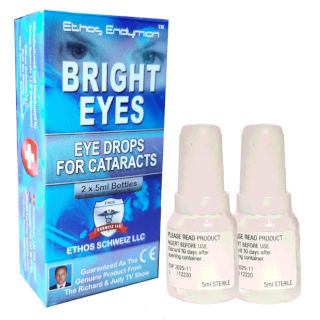Understanding Aging Eyes:
Common Changes and How To
Best Protect and Restore Your Vision
As we journey through life, our bodies go through a series of transformations, and our eyes are no exception. The aging process affects nearly every part of our bodies, and our eyes are particularly susceptible to change.
As we age, the risk of developing eye conditions and vision problems increases.
However, understanding the natural changes that occur in aging eyes and taking proactive steps to care for them, can make a significant difference in maintaining good eye health and preserving clear vision.
The Aging Eye: Common Changes
To comprehend the challenges of aging eyes, it’s essential to first understand the natural changes that occur as we grow older.
Here are some of the most common age-related eye changes:
1. Reduced Lens Flexibility
One of the earliest signs of aging eyes is a decrease in the flexibility of the eye’s natural lens.
This natural lens, located just behind the colored part of the eye (the iris), is responsible for focusing on objects at various distances. As it becomes less flexible, the eye struggles to change focus effectively, leading to difficulty seeing up close.
This condition is known as presbyopia and typically becomes noticeable in your early to mid-40s.
2. Diminished Pupil Size and Response
Aging eyes also experience changes in pupil size and responsiveness to light. The pupil, the black center of the eye, adjusts its size in response to light levels to regulate the amount of light that enters the eye.
With age, the pupils become smaller and react more slowly to changes in lighting conditions. This can lead to increased sensitivity to glare and reduced ability to adapt to low-light environments.
3. Dry Eyes
Dry eye syndrome is a common condition that tends to become more prevalent with age. It occurs when the eye doesn’t produce enough tears or the tears evaporate too quickly, resulting in discomfort, redness, and irritation.
Hormonal changes, environmental factors, and medications can contribute to dry eyes, making it a common complaint among older adults.
4. Changes in Color Perception
Aging can also affect color vision. The ability to distinguish between certain colors may diminish, particularly for shades of blue and green. This can make it challenging to identify color-coded objects or perceive subtle differences in color.
5. Cataracts
Cataracts are a prevalent age-related eye condition characterized by the clouding of the eye’s natural lens. They develop slowly over time and can lead to blurred vision, increased sensitivity to glare, and difficulty with nighttime driving.
Cataracts are a leading cause of vision loss among older adults but are treatable through surgery.
6. Glaucoma
Glaucoma is a group of eye conditions that damage the optic nerve, often due to increased intraocular pressure (IOP). It typically progresses slowly and without noticeable symptoms until advanced stages.
By the time symptoms become evident, irreversible vision loss may have occurred. Early detection and treatment are critical to managing glaucoma effectively.
The Importance of Proactive Eye Care
Now that we have a better understanding of the common age-related changes in the eyes, it’s crucial to emphasize the importance of proactive eye care.
Many eye conditions can be managed or even prevented when detected early.
Here are some essential steps to consider if you suspect you may be experiencing early signs of cataracts, glaucoma, or any other age-related eye disorder:
1. Seek an Optometrist’s Evaluation
Regular eye exams are fundamental to maintaining good eye health, especially as you age. An optometrist can assess your vision, screen for eye diseases, and provide guidance on managing age-related vision changes.
Early detection of eye conditions can lead to more effective treatments and better outcomes.
2. Reduce Oxidative Stress and Inflammation
Oxidative stress and inflammation play significant roles in the development and progression of various eye conditions, including cataracts and glaucoma.
To reduce these factors, consider incorporating the following strategies into your routine:
a. NAC Carnosine Eye Drops
N-acetyl-carnosine (NAC) eye drops have gained attention for their potential benefits in reducing oxidative stress and inflammation in the eye.
These eye drops contain antioxidants, anti-inflammatory and anti-hypertensive properties that can help alleviate eye strain and reduce intraocular pressure.
b. Carnosine Supplementation
Carnosine, an amino acid found in high concentrations within the eye and throughout the body, has been associated with improved blood circulation to the eye and the removal of toxins from the body.
This can be particularly beneficial for individuals with glaucoma, as it may help manage intraocular pressure.
3. Incorporate Lutein and Zeaxanthin
Lutein and zeaxanthin are antioxidants that can help protect the eyes from free radical damage, a contributing factor in glaucoma and other eye conditions.
These carotenoids are naturally present in the retina and are essential for maintaining healthy vision. You can enhance your intake of lutein and zeaxanthin through dietary choices and supplements.
4. Choose Your Foods Wisely
Diet plays a significant role in overall health, including eye health. Minimize your consumption of processed foods, saturated fats, and refined sugars, which can lead to inflammation and an increase in eye pressure.
Instead, focus on incorporating foods rich in carotenoids and antioxidants, such as:
– Leafy greens like spinach and kale
– Yellow and orange vegetables like carrots and sweet potatoes
– Fruits like oranges, kiwi, and grapes
– Fish rich in omega-3 fatty acids, like salmon and mackerel
– Nuts and seeds, such as almonds and flaxseeds
A balanced diet can provide essential nutrients that support eye health and may help delay the progression of age-related eye conditions.
5. Marine Phytoplankton
In the pursuit of optimal eye health as we age, exploring unique and natural sources of nutrients is essential.
One such source that deserves attention is marine phytoplankton.
These microscopic marine organisms, often overshadowed by their larger counterparts in the ocean, contain a treasure trove of nutrients that can be particularly beneficial for our eyes.
Among these nutrients, marine phytoplankton contains a remarkable group of natural fat-soluble pigments known as carotenoids.
Marine phytoplankton is a unique and potent source of carotenoids, including beta-carotene, astaxanthin, fucoxanthin, lycopene, and many others.
These carotenoids offer anti-hypertensive and antioxidative properties that are vital for maintaining healthy eyes, particularly as we age.
By incorporating marine phytoplankton into your diet and making other healthy lifestyle choices, you can take proactive steps to protect and preserve your vision for years to come.
Lifestyle Choices That Impact Eye Health
In addition to the proactive measures discussed earlier, it’s crucial to address lifestyle choices that can have a detrimental effect on your eye health, especially as you age.
These habits can exacerbate age-related changes and increase the risk of eye conditions. Let’s explore some lifestyle choices to avoid for the sake of your eyes:
1. Processed Foods and Refined Sugars
A diet high in processed foods and refined sugars is not only harmful to your overall health but can also negatively impact your eye health.
These foods can contribute to inflammation throughout the body, including the eyes, and may increase the risk of most age-related eye conditions.
When you consume processed foods and sugary treats regularly, it can lead to fluctuations in blood sugar levels. These fluctuations may affect the delicate blood vessels in the eyes and contribute to conditions like diabetic retinopathy, which can cause vision loss.
To support your eye health, minimize your intake of processed foods, sugary beverages, and excessive sweets.
2. Smoking
Smoking is a well-known risk factor for numerous health problems, and eye health is no exception. Smoking has been linked to an increased risk of age-related macular degeneration (AMD), cataracts, and damage to the optic nerve, which can lead to glaucoma.
The chemicals in tobacco smoke can damage the blood vessels in the eyes and reduce blood flow to critical parts of the retina. This can lead to vision impairment and increase the progression of AMD. Quitting smoking is one of the most significant steps you can take to protect your eye health and overall well-being.
3. Excessive Alcohol Consumption
Excessive alcohol consumption can have a negative impact on your eyes, too. Chronic heavy drinking may lead to nutritional deficiencies that affect the eyes, such as a deficiency in vitamin B1 (thiamine), which can result in vision disturbances. Additionally, alcohol can disrupt the balance of fluids in the body, potentially leading to dry eyes.
Moderation is key when it comes to alcohol consumption. If you choose to drink, do so in moderation and ensure that you maintain a balanced diet to support your eye health.
4. Inadequate Protection from UV Radiation
Prolonged exposure to ultraviolet (UV) radiation from the sun can contribute to various eye conditions, including cataracts and certain types of eye cancers. It’s crucial to protect your eyes from harmful UV rays by wearing sunglasses that provide 100% UV protection when you’re outdoors, even on cloudy days.
5. Neglecting Regular Eye Exams
Regular eye exams are a cornerstone of maintaining good eye health. Neglecting these appointments can lead to the undetected progression of eye conditions. Even if you don’t currently wear glasses or experience vision problems, routine eye exams can help catch potential issues in their early stages.
6. Poor Digital Device Habits
In our digital age, many of us spend extended periods using smartphones, tablets, and computers. This can lead to digital eye strain, also known as computer vision syndrome. Symptoms may include eye fatigue, dryness, blurred vision, and headaches.
To reduce digital eye strain, follow the 20-20-20 rule: every 20 minutes, take a 20-second break to look at something 20 feet away. Additionally, adjust your screen settings, use proper lighting, and consider using artificial tears to keep your eyes moist.
Conclusion
Understanding the natural changes that occur in aging eyes is the first step towards proactive eye care.
While these changes are inevitable, you have the power to take control of your eye health and reduce the risk of age-related eye disorders.
Proactive steps to reduce oxidative stress and inflammation, improve blood circulation, and make healthy dietary and lifestyle choices, can help you preserve clear vision and enjoy the beauty of the world for years to come.
Remember, your eyes are precious, and proactive care can make a world of difference in maintaining their vitality and function as you age.
Prioritizing your eye health is an investment in your future quality of life.
Ethos Vision:
A Trusted Path to Vision Protection and Restoration
As we embrace the wisdom that comes with age, we must also acknowledge the impact that time and environmental stressors can have on our vision.
Ethos NAC Carnosine Eye Drops and Ethos Carnosine Powder stand as veritable saviors for those navigating these changes.
Cataracts, the silent invaders of clarity, are no match for Ethos NAC Carnosine Eye Drops. Imagine watching a world obscured by haze transform back into vivid focus.
The potential for a cataract-free future is within your grasp, dear reader.
Glaucoma, the stealthy predator, can also be tamed. Ethos NAC Carnosine Eye Drops possess the potency to alleviate the underlying oxidative stress and inflammation that fuel its progression. Witness a renewed sense of ease and clarity as you take back control of your vision.
Dry eyes, AMD, and floaters need not dictate your everyday experience. Ethos Vision, both drops and powder, offers a holistic approach to these issues, rekindling your eyes’ innate ability to heal and thrive.
Renewed Future for Your Vision
Embrace the wisdom of Ethos NAC Carnosine Eye Drops and Ethos Carnosine Powder. Restore and protect your vision through the power of nature.
Reclaim the brilliance of your vision, and forge a path towards renewed vitality.
These remarkable natural solutions are extending to you a future where your vision remains a precious gift, and thoughts of the years ahead are not tainted by dimming vision.





